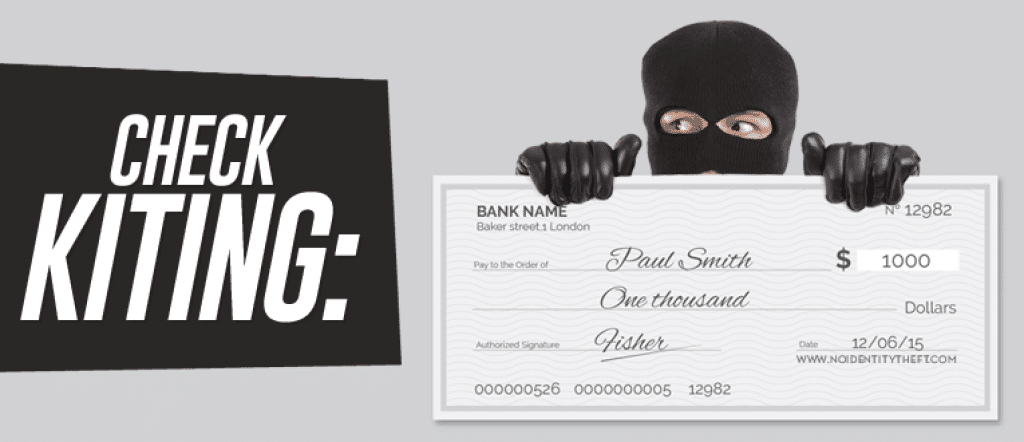What is Check Kiting?
Check kiting is a popular form of fraud that allows a person to take advantage of non-existent money in a bank account by using bad or “hot” checks as a form of unauthorized credit.
How does it work?
Kiting can leave a large amount of damage to a financial institution, but the reality is that the process doesn’t have to involve large amounts of money.
The process of kiting can be simple or more complex.
A simple form of this fraud might involve a person writing a check for a large amount – for example, $1,000 – from “Bank A.”
The catch is, there’s only $100 in Bank A’s account.
The check-writer takes the $1,000 check to a second bank, “Bank B,” to deposit it.
And before Bank B can process the $1,000 deposit, the check-writer goes to Bank B and asks to withdraw an amount of more than $100, and up to $1,000.
The check-writer receives that amount in cash, before the bank realizes that the check for $1,000 is actually destined to bounce.
In a more complex scheme, criminals have been known to involve more than two banks or accounts.
Some news reports show smaller financial institutions have suffered great losses at the hands of kiting – sometimes in the tens of millions of dollars.
What’s the big deal with kiting?
First of all, many people who get caught up in kiting simply do so because they don’t make enough to pay their bills.
Perhaps they can’t obtain a credit card, and they take advantage of banks by writing hot checks.
But kiting can actually hurt the bank caught up in the scheme.
When the process of a hot check takes place, even when financial officers catch it, at least one of the institutions involved in that scheme could be forced to take a loss.
And when banks lose money, the costs are passed on to the customers in some form or fashion.
Popular forms of kiting
Retail kiting involves a person writing a check to a business such as grocery store or retailer, which might offer on-the-spot cash, sometimes with the catch that the check-writer make a purchase.
Sometimes, the alleged kiter takes the money and puts it back into his or her bank account the same day so that other checks will clear.
In the meantime, the check passed at the supermarket won’t clear for a day or more.
Like other forms of kiting, retail kiting can be simple or based on a more complex process.
With circular kiting, a kiter might write a check to himself from one of his banks to another of his banks.
Funds at the second bank might be available the same day, allowing all owed checks to clear.
But the next business day, the kiter writes a check to himself on the second bank account and deposits it into the first bank to provide what some refer to as “artificial” or “false” funds.
This allows the check written the previous day to clear the bank.
This cycle continues until real funds are placed into the bank to stop the process, or until the kiter is caught in action.
Sometimes, several kiters work together to maintain a cycle of check-kiting.
Corporations have also been accused of running kite operations.
These efforts are often possible because corporations, unlike an individual, might be given instant access to funds.
Millions of dollars can be caught up in corporate kiting activities.
Legal ramifications
In the United States, check kiting can be prosecuted as a form of bank fraud or through other lawful avenues.
Violations of the law can result in hefty fines and prison sentences as long as 30 years, according to the Department of Justice.
The good news – with the growth of technology, kiting has diminished greatly over the years.
As checks become obsolete, this type of scam will die off.[/vc_column_text][/vc_column][/vc_row]

